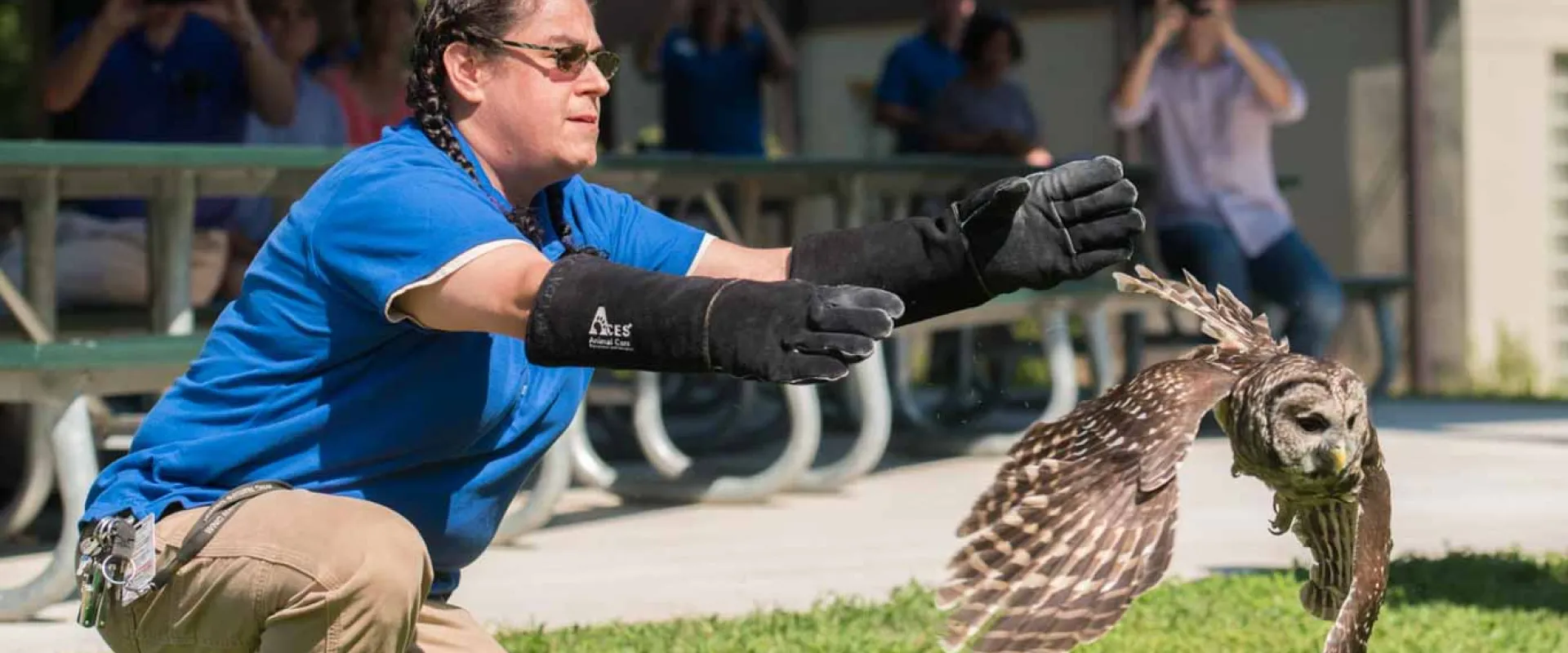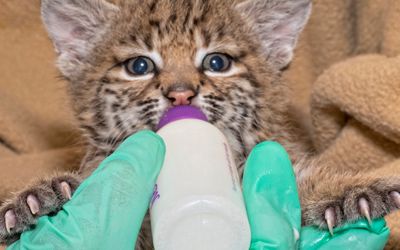Comprehending the Requirement for Animal Control Burlington in Urban Environments
The Role of Humane Wild Animals Removal in Protecting Citizen Ecosystems
Humane wildlife elimination is not just an ethical factor to consider but an essential part in guarding regional ecosystems. By prioritizing non-lethal techniques, it addresses the delicate balance in between human development and wildlife habitat preservation. This strategy not only alleviates conflicts yet additionally guarantees the sustainability of biodiversity. The efficiency of these approaches warrants better exam, specifically in urban setups where human-wildlife communications are significantly intricate. As we contemplate the effects of our approaches and their effect on ecological harmony, one must question exactly how these methods can be enhanced to promote a much more symbiotic relationship with nature.
Understanding Human-Wildlife Conflicts
Human-wildlife problems commonly develop when the natural environments of pets intersect with human tasks, causing competitors for resources and space. As urbanization and farming expansion continue to encroach upon wildlife areas, pets such as deer, prairie wolves, and raccoons find themselves in closer closeness to human populaces. This proximity can cause harmful influence on both wild animals and humans, as pets may cause damage to plants, infrastructure, and personal residential or commercial property while humans might inadvertently harm wild animals via environment devastation and various other anthropogenic pressures.
The intricacy of these problems comes from an array of aspects. Changes in land use, environment change, and the fragmentation of ecological communities usually require wild animals to adapt to brand-new settings, often leading them into residential or business locations. Additionally, the schedule of human-generated food resources, such as rubbish and pet food, can draw in wildlife to human settlements, worsening communications and potential conflicts.
Resolving human-wildlife disputes requires a nuanced understanding of animal behavior, environmental characteristics, and socio-economic factors to consider. By researching these policymakers, interactions and guardians can create techniques that aim to minimize disputes while protecting biodiversity and maintaining eco-friendly equilibrium. The goal is to cultivate coexistence and lessen unfavorable influence on both human areas and wild animals populations.
Value of Non-Lethal Methods
Non-lethal techniques of wildlife removal symbolize this ethos by giving solutions that avoid damage to wildlife while addressing human concerns. By using such techniques, we can take care of wild animals communications without resorting to deadly procedures, consequently protecting animal populaces and decreasing ethical problems linked with killing.
Non-lethal approaches are critical in preserving eco-friendly equilibrium. They guarantee that species remain to satisfy their roles within ecosystems, such as regulating insect populations or cross-pollinating plants. These approaches frequently verify more effective in the lengthy term, as removing private animals can create a space that is promptly filled by various other participants of the varieties or different types entirely. This can bring about a cycle of continuous elimination initiatives, whereas non-lethal deterrents deal with the origin of wildlife existence.
Additionally, non-lethal strategies foster conjunction by informing the general public regarding wildlife habits and encouraging harmonious living methods. This understanding can bring about much more lasting human-wildlife interactions, inevitably protecting both area rate of interests and pet welfare.
Advantages for Biodiversity
When non-lethal wild animals elimination methods are employed, they contribute substantially to biodiversity conservation. By making sure the risk-free relocation of pets as opposed to their elimination, these techniques preserve ecological equilibrium and shield the honesty of communities. Gentle methods decrease disturbances to local animals, allowing indigenous types to thrive. This conservation is crucial as each varieties plays an one-of-a-kind function, usually as pollinators, predators, or prey, which collectively sustain community functionality.

Moreover, these approaches promote coexistence between human beings and wildlife, minimizing adverse interactions and protecting the abundant tapestry of life that defines biodiverse regions. This method encourages a much deeper understanding and respect for wild animals, cultivating area support for conservation efforts. Ultimately, gentle wild animals removal is a vital component in safeguarding biodiversity, guaranteeing ecological communities remain vibrant and useful for future generations.
Approaches for Efficient Removal
Implementing reliable strategies for humane wild animals removal needs a thorough understanding of animal actions and habitat needs. This knowledge offers as the foundation for creating strategies that make sure the honest and safe moving of wildlife.
An additional vital method is employing exclusion methods, which concentrate on securing entry factors to protect against pets from going back to frameworks. This method not only addresses the prompt concern yet likewise works as a long-lasting remedy, reducing future disputes between people and wild animals. Furthermore, using non-toxic deterrents and repellents can motivate pets to abandon areas willingly, complementing other elimination initiatives.
Capture and relocation ought to always be a last hope, utilized only when animals position a direct danger or are incapable to leave by themselves. In such situations, using gentle traps and guaranteeing the release of animals in ideal environments are important to safeguarding their welfare. Partnership with wildlife specialists and adherence to lawful guidelines further improve the effectiveness of these approaches.

Promoting Coexistence in Urban Areas
Promoting conjunction in metropolitan locations needs a multifaceted technique that balances human development with the demands of local wild animals. As urbanization remains to expand, it is essential to carry out approaches that minimize human-wildlife disputes while preserving biodiversity. Urban coordinators and policymakers need to integrate green spaces, such as parks and wildlife hallways, into city styles to supply environments for indigenous types. These locations not only support wild animals yet also boost the high quality of city life click here to find out more by boosting air quality and offering entertainment rooms for residents.
Education and learning and awareness projects are important in cultivating a culture of conjunction. Homeowners need to understand the relevance of wild animals and the role they play in neighborhood ecological communities. Workshops and educational sessions can furnish neighborhoods with understanding on exactly how to reduce problems, such as securing trash and utilizing humane deterrents to avoid wild animals invasion.
Additionally, modern technology can official website play a considerable duty in promoting conjunction. Making use of wildlife tracking systems, for instance, can assist track pet movements and inform city planning decisions. Collaborations between environmental companies, regional governments, and community teams can even more strengthen these efforts, ensuring that urban development progresses sustainably while appreciating the ecological equilibrium.
Verdict
Humane wildlife elimination is necessary for keeping ecological balance and biodiversity by utilizing non-lethal techniques that reduce harm to pet populations. Recognizing human-wildlife disputes and executing strategies such as exemption methods and environment modification can successfully handle these encounters. Such strategies sustain the preservation of indigenous species and their habitats, boosting area interaction and awareness. Inevitably, advertising conjunction in urban areas fosters an unified connection in between human beings and the natural surroundings, making certain sustainable ecological communities for future generations.
As urbanization and farming growth proceed to elbow in upon wild animals areas, pets such as raccoons, prairie wolves, and deer find themselves in closer distance to human populaces. Non-lethal methods of wildlife removal embody this values by providing remedies that protect against harm to wild animals while attending to human worries. By employing such approaches, we can manage wild animals communications without resorting to deadly procedures, thus maintaining animal populations and reducing honest concerns associated with killing.
Implementing reliable methods for humane wild animals elimination needs a detailed understanding of animal actions and environment demands.Humane wildlife elimination is crucial look at here for preserving environmental equilibrium and biodiversity by using non-lethal approaches that lower injury to animal populaces.